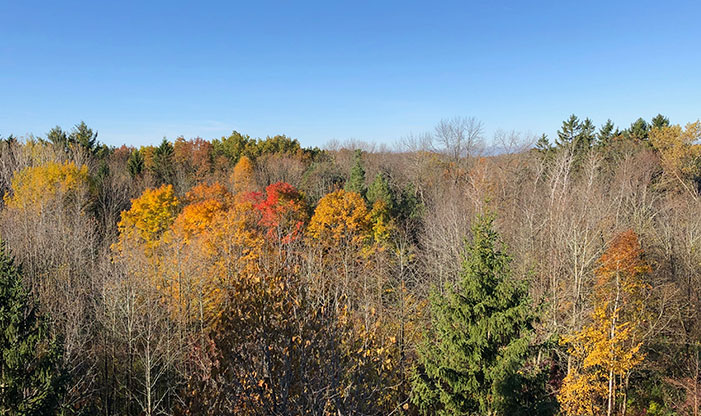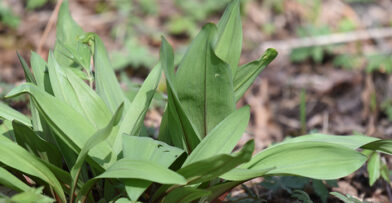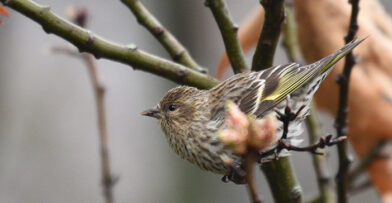Autumn brings about a time of transition, unlike any other time of year. As the daylight hours decrease, the shorter photoperiod triggers a multitude of changes in the plants and animals at the Center.
You will witness one of the most striking seasonal transitions by climbing our 60-foot observation tower to view the spectacular show of deciduous trees. As leaves lose their green pigments from chlorophyl, warm hues of golds and reds dominate the canopy as seen from this bird’s eye perspective. In the woodland trails below the tower, red squirrels, gray squirrels, and chipmunks scurry underfoot and high in the branches as they collect provisions for the upcoming winter.
Aquatic Life in Autumn
The Center’s ponds are also undergoing dramatic shifts as the air begins to cool. You may see or hear busy muskrats, aquatic mammals that inhabit many of our ponds, who are building lodges and fortifying them for the winter ahead. In contrast, it may seem that the frogs and turtles have disappeared. These ectothermic amphibians and reptiles are actually preparing for brumation, similar to hibernation, when they will retreat to a hibernaculum, or shelter, and slow their metabolic processes over winter.
A walk along the boardwalk through the prairie to Teal pond reveals seasonal changes in the vegetation. Late blooming asters and goldenrods transition from purple and gold flowers to intricate seed pods which will take root in the prairies and flourish for years to come. In early fall, brown cattail flower heads at the pond turn to fluff, so their seeds can be carried away by wind or water.
Surprising Plant Behavior of Fall
As autumn progresses, more discoveries await you during this time of transition in front of the Visitor Center. Near the walkway, one plant is getting ready to bloom! American witch-hazel is a tall shrub which produces delicate yellow flowers in October and November, just as other trees’ leaves are falling. This plant holds another surprise in store – while its flowers are in bloom, the fruit from the previous season matures and the seeds explosively discharge from their capsule. You may even witness the seeds dispersing a distance of up to 25 feet!
Even closer to the building, you may encounter some late migrating songbirds perching in a tamarack tree, taking a quick rest stop on their journey south. As the season progresses, you will notice something unique about these conifers. While most conifers are considered evergreens because they keep their needles all year, in October the tamarack’s leaves will change to a smokey golden color before dropping to the ground for the winter. The tamarack is Wisconsin’s only native deciduous conifer.
Visit the Center throughout fall to witness the awesome changes in the color of leaves, vegetation, and animal activity. Wondrous sights are available to you throughout the entire season.


